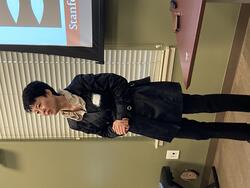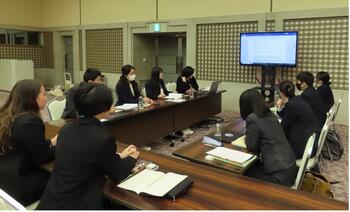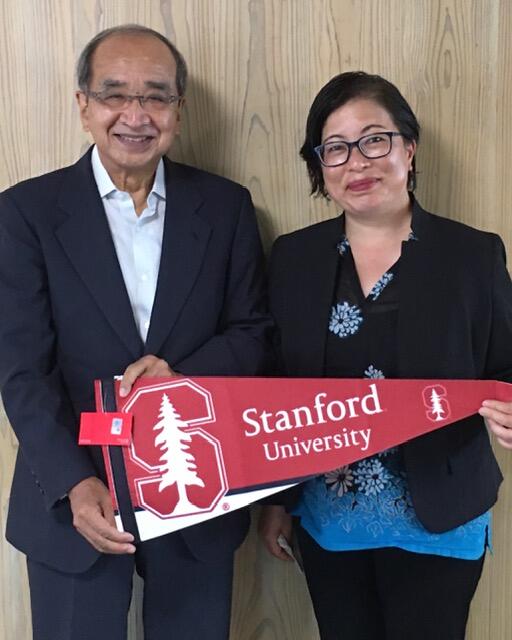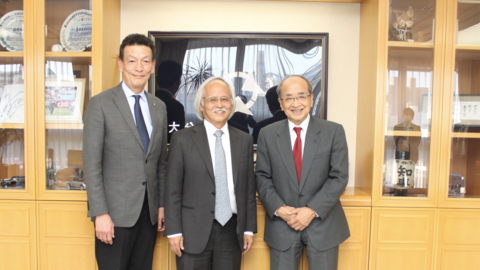Community College Instructors Convene at Stanford for the 2023 EPIC Symposium
Sponsored by Stanford Global Studies (SGS), the (EPIC) Community College Faculty Fellowship program brings together a cohort of community college faculty and academic staff from various disciplines to work collaboratively with Stanford staff for one academic year (AugustŌĆōMay). Each EPIC fellow designs a project that aims to internationalize curricula and develop global competencies among community college students. Jonas Edman and I met monthly with six of the 11 2022ŌĆō23 EPIC fellows throughout the academic year. For me, some of the more meaningful discussions revolved around topics related to culturally relevant pedagogy; non-Western perspectives on topics like psychology, global citizenship, and finance; community college demographics; and the fellowsŌĆÖ communication with Stanford faculty and/or the incorporation of Stanford scholarship in the fellowsŌĆÖ projects. The fellowship culminated with the , ŌĆ£Integrating Global Topics into Community College Curricula,ŌĆØ which was held on May 20, 2023 and featured panels of current EPIC faculty and leadership fellows. The six EPIC fellows with whom Edman worked are listed below and their projects all focused on curriculum, which is a key component of 91│į╣ŽŌĆÖs mission to help make Stanford scholarship on global issues accessible to KŌĆō12 and community college educators and students. Each fellow gave an overview of their project to an audience of Stanford faculty and staff, EPIC alumni, and other community college faculty and staff.
Amy Coren, Professor of Psychology, Pasadena City College
Project: Beyond WEIRD: Reconceptualizing the Introduction to Psychology Course
Fran Farazdaghi, Associate Professor of Global and Peace Studies, Golden West College
Project: An Expanded Boundary of Care: Global Citizenship in the Modern World
Michelle Macfarlane, Agriculture Faculty and Distance Learning Coordinator, Sierra College
Project: Decolonizing the United States Food System
Yuliana Mendez, Associate Professor of Business, Yuba Community College
Project: Expanding the Borders of Personal Finance Curriculum Through Global Perspectives
Elisa Queenan, Professor of Business and Economics, Porterville College
Project: International Virtual Collaboration: Where the Only Thing More Unpredictable Than Your Wi-Fi Is the Conversation
Mark Rauzon, Professor and Chair of Geography Department, Laney College
Project: Breaking Up in the Bering Sea: Russia/U.S./Climate Change Chaos and the Effect on Native Communities and Bering Sea Ecology
Summaries of all of the 11 2022ŌĆō23 EPIC fellowsŌĆÖ projects can be found .
After an engaging question-and-answer session, Edman made closing comments and mentioned how much he had learned from the EPIC fellows not only in terms of subject matter content but also pedagogical content knowledge, especially at the community college level.
At the end of the symposium, the EPIC fellows received certificates from SGS Executive Director and Academic and Outreach Manager for their successful completion of the fellowship. During the symposium, they were invited to join the (GEN), which in partnership with SGS seeks to inform, inspire, engage, and empower community college educatorsŌĆöand their studentsŌĆöto more deeply engage with global themes and learning resources, as well as international dialogue, research, and pedagogical strategies.
Following the symposium, I reflected on each of the presentations. I was, of course, already familiar with the content of their projects prior to the symposium. However, something unexpected from each presentation really stood out. Coren and Mendez described how their collaboration with other EPIC fellows in the group really enhanced their work with their students and commented on how their EPIC projects became a bridge between the cohort of EPIC fellows and their students. Farazdaghi spoke about how EPIC enabled her to empower her students to drive and shape her new curriculum on global citizenship. Macfarlane shared insights on the challenges of integrating her new course in departments like ethnic studies. Queenan spoke about how she adapted the five-step Design Thinking framework into her course. And through a video interview of a Siberian Yupik, Rauzon integrated an Indigenous perspective in his talk. These comments will help to further refine how Edman and I approach working with the 2023ŌĆō24 EPIC fellows.
Importantly, Edman and I are most grateful to Kristyn Hara for expertly facilitating the EPIC program over the past year and for planning and implementing this yearŌĆÖs EPIC symposium.
The EPIC Community College Faculty Fellowship program is made possible through the support of U.S. Department of Education Title VI funding.
To stay informed of 91│į╣Ž news, and follow us on , , and .
Read More
Stanford Global Studies hosts 2023 Education Partnership for Internationalizing Curriculum (EPIC) Symposium: Integrating Global Topics into Community College Curricula.

































